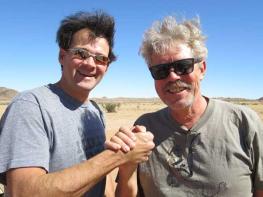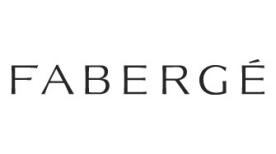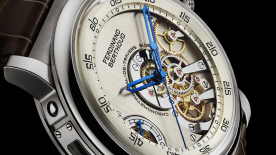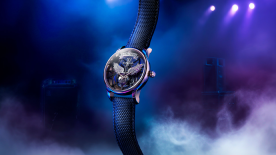Fabergé has only recently been restored to its former glory and you were instrumental in this. Tell us how it came about.
To start at the beginning, I was actively involved in the acquisition of the Fabergé brand and name from Unilever, who had owned it since 1989. That transaction took around two years and we eventually concluded it in January 2007. At that point, Fabergé had a number of licence agreements that had been issued to assorted parties around the globe, who were making a wide and interesting variety of stuff. Some of it was great, but some of it was certainly below par. That is not a light undertaking and it took a while to do away with the licence agreements that were in place. We eventually managed it and today there is not a single licence agreement in place so control has effectively been restored to the centre.
We approached the project with the goal of restoring the dignity of Fabergé in keeping with the spirit and ethos of what it stood for pre-1917, which meant that we were going to focus on “hard” luxury, in other words objects, timepieces and jewellery. We tackled the jewellery problem first, working with a remarkable fellow called Frédéric Zaavy, who unfortunately passed away a couple of years ago at a young age. Together with him in 2009 we launched the first new Fabergé jewellery collection since the brand had been reunited with the Fabergé family, who lost the rights in 1951. This collection showed the world immediately that Fabergé was back.
"Finding the right people in my experience is harder than finding a great emerald"
With jewellery production re-established, how did you approach the return to watchmaking?
“Watchmaking is a fundamentally different proposition to taking on jewellery. You have to find the right people, otherwise you are lost in the wilderness. Finding the right people in my experience is harder than finding a great emerald. And it is extremely hard to find a great emerald. Our industry is about people and our relationships with colleagues and our customers. If we never forget that then we have the key to the future.
How did you go about finding the right people?
We worked with a head-hunter to identify the leading candidates who could come and take on this almighty challenge. Unsurprisingly, most of them were based in Switzerland and most in the surroundings of Geneva. In 2013 I came over for a couple of days to interview the candidates. Many were gentlemen slightly more advanced in their years but with decades of experience running serious businesses. The very last interview, however, was with a very young and very inexperienced looking lady. I chatted to her for an hour and half and she was so different to the well-heeled gentlemen I had been speaking to over the past couple of days. But the most notable difference was that there was a glint in her eye that sent a very strong signal.
I went back to London and chatted with my colleagues and partners and they thought I was out of my mind when I suggested hiring Aurélie Picaud. Fortunately, having been involved in this project for some time, I prevailed in the decision-making and Aurélie moved to London four months later, in October 2013.
At Baselworld last year we presented the Peacock watch with an entirely new movement developed by a team that didn’t exist in 2013, which I think is staggering stuff. Then to go on and pick up a prize at the Grand Prix d’Horlogerie the same year was fantastic. It shows what can be achieved in watchmaking.

How do you plan to perpetuate the legacy of Peter-Carl Fabergé?
I think many people thought that Fabergé would be a one-hit wonder and that we wouldn’t be able to repeat that success. But this year we have two new movements developed from scratch over the past year. Again, what has been accomplished by Aurélie and her team is absolutely incredible.
Some people think that Fabergé has no history in watches and timekeeping, but that is absolutely not the case. If you look at the pre-1917 period not only did Fabergé make a number of pendant watches, they also made a large number of table clocks with Moser movements and they used clocks into many of the Imperial Eggs and other eggs made for private families such as the Rothschilds.
In order to continue this tradition, we need to be sufficiently creative and this means that we need to have the right people internally. Secondly, these people have to find the right workmasters, who also have a glint in their eye, and build up the relationship with them. If you can do this, it makes a huge difference.
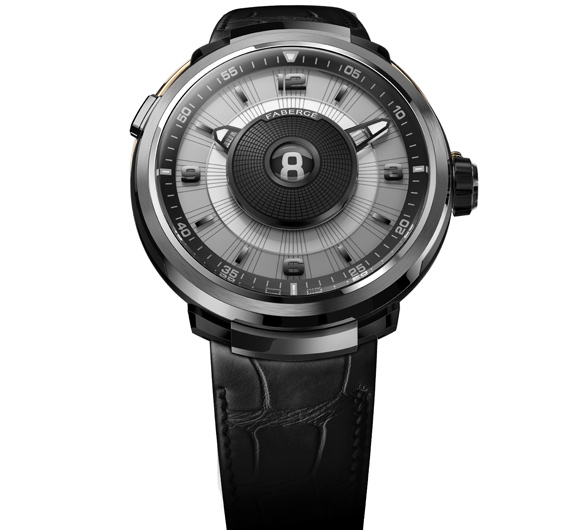
Will you be submitting the Visionnaire DTZ in this year’s Grand Prix d’Horlogerie de Genève?
“I suddenly feel that there needs to be a GMT category [laughs]. But there are obviously other categories and you can assume that we will submit it. I think the watch speaks for itself and it has some absolutely revolutionary aspects to it. Fabergé is all about surprise, discovery and delight and there are three aspects to this watch that do just that. It shows our ability to think outside the box and throw out conventions. We have been able to bring this timepiece to market at what I think is a really remarkable price. But what is important to me is that when someone has played with the watch and put it on their wrist, they smile either internally or outwardly.
